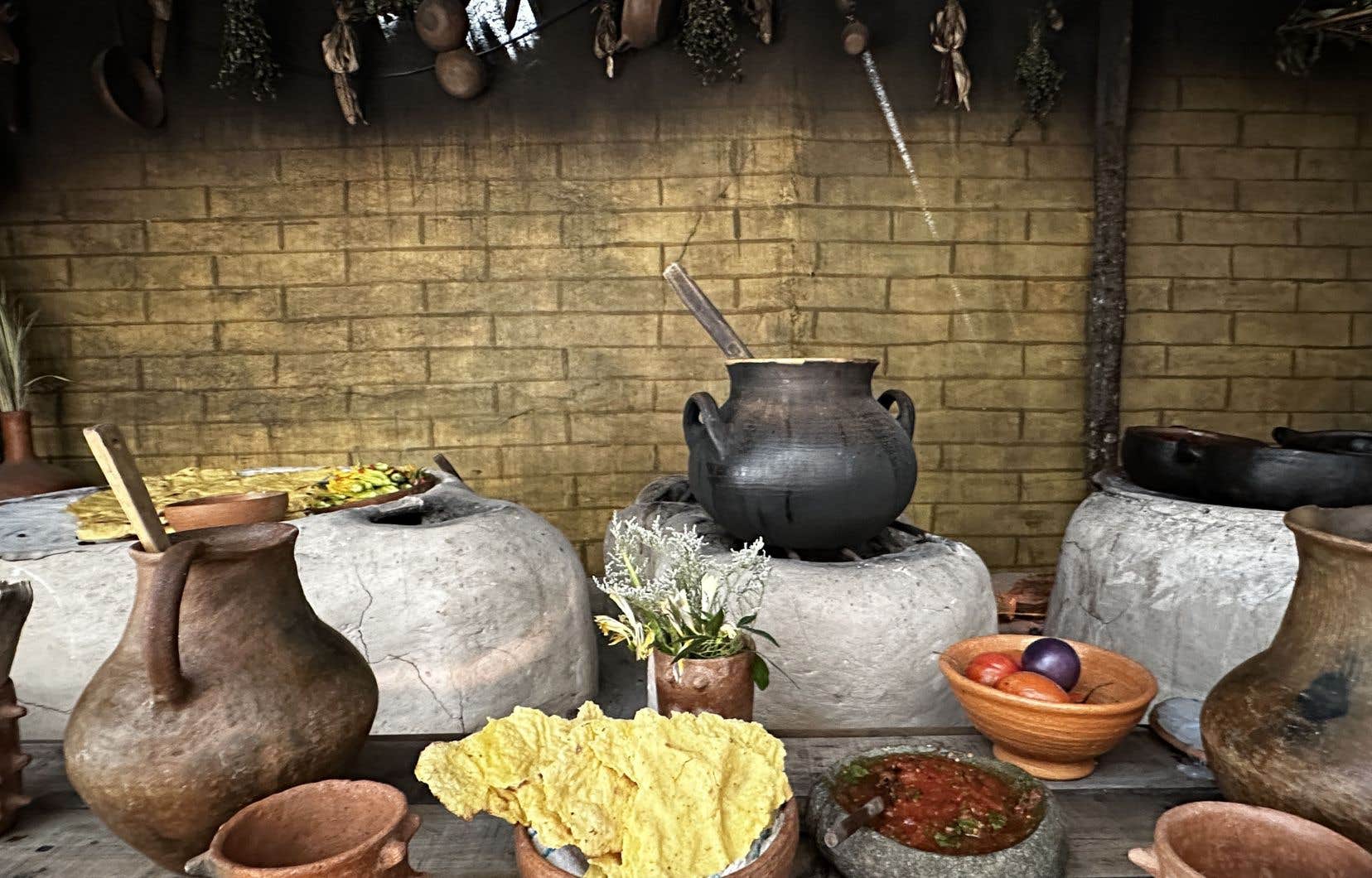This text is part of the special Pleasures notebook
The true cradle of Mexican gastronomy, the city of Oaxaca, just south of Mexico City, amazes all our senses. Story of a gourmet journey.
To immerse ourselves in the essence of Oaxaca, we immediately head to the street food kiosks and markets. The guide Betsaida López Díaz first takes us to eat memes, a type of tortilla a little thicker than that used for tacos. As for garnishes, we are spoiled for choice: mushrooms, zucchini flowers, black bean puree, quesillo — the local cheese, which flakes as you wish. Either way, it’s delicious!
The Sánchez Pascuas market is the perfect place to taste tamales, another emblem of Mexican cuisine. Made from cornmeal, they are usually stuffed with vegetables, meat or cheese, then wrapped in a corn husk. Real little bundles of happiness! The original recipe dates from the pre-Columbian era, which is what our guide focuses on, with in-depth knowledge of the country’s history.
She introduces us to the lawyer criollo (endemic), a tiny version of the one we know, whose skin is tender and edible.
At the meat counters of the 20 de Noviembre market, the traders cook our purchases on site. They add vegetables to our meat on the grill, and we order a cold beer to accompany our meal. The good idea!
Unique gastronomic pleasures
Oaxaca is a relatively small city. It has around 300,000 inhabitants. But the number of gourmet restaurants there is impressive. The offer is vast and of very good quality.
If we had to choose just one place to go, we’d go for chef Thalia Barrios García’s Levadura de olla. Full of talent, she highlights the richness of the region’s products and culinary techniques. For example, her signature dish is a large plate in which she places slices of seven different varieties of tomatoes on a thin layer of beet puree. It’s so simple, and possibly the most delicious way to pay homage to tomatoes.
For an even more spectacular experience, its second restaurant, Cocina de humo, serves village cuisine in a perfectly rustic setting. Everything is cooked there on a comalthis large terracotta plate that is placed in a wood oven, and the ingredients are ground in metatethe traditional stone millstone and staff.
Added to this are various fermented drinks, notably made with corn water, and extraordinary dishes, such as this zucchini flower and bean soup with exquisite flavors and textures. Let’s just say that all our senses and our thirst for knowledge were not left wanting.
Tame the metate
Our slight obsession with tortillas takes us to Teotitlán del Valle, a Zapotec community in eastern Oaxaca known for its weaving skills. It is Voyageurs du monde, a tour operator specializing in tailor-made stays, who guides us to the family of Aurora Lazo Hernández. For seven generations, she has cultivated a particular variety of corn, bolitawhite. She also grows bolita yellow and bolita mallow to prepare different tortillas. Today, Aurora is preparing tostadas — a crispy texture — with blue grains, tortillas for making quesadillas and tlayudas — large, thin, crunchy tortillas — with white grains.
To make corn flour, she must first nixtamalize the grains. This Mesoamerican process involves soaking them in an alkaline lime-based solution, which softens them and facilitates digestion and absorption of nutrients from the corn. We can then try to grind them on the metate under the supervision of Aurora. Its positive reinforcement is such that we cannot stop, even if we feel bruises forming in the palms of our hands. The freshness of the grains and cooking over a wood fire change everything. These are undoubtedly the best tortillas we have eaten in our lives!
Cultural outings
Mezcal, an alcohol made from agave, has a controlled designation of origin in eight Mexican states, including Oaxaca. This fascinating plant encourages us to go to a palenque, the place where the famous alcohol is produced. Darinel Silva takes us to Santa Catarina Minas to meet Rosario Angeles, one of the few women mezcaleras in this still very masculine universe.
On the way, we have lunch at Almú, in San Martin Tilcajete. Although the town is surrounded by barren land, the restaurant sits in a lush nursery. According to the principles of slow cooking, all dishes are cooked over a wood fire. THE memes prepared to the minute on the comal in front of us are garnished with fresh cheese and served with two homemade salsas made from garden produce. It smells so good, all the dishes are tasty and the decor is sublime.
Arriving at Rosario, we respect each step, from cooking the piñas, the fruit of the agave, resembling an immense pineapple, from the distillation of the paste fermented beforehand in large wooden vats. His method is very artisanal, following the rhythm of this mainly wild plant which can take several years to reach maturity. Obviously, making good mezcal is an art that Rosario masters wonderfully.
This trip was made possible in part by World Travelers and the Oaxaca Tourism Office.
This content was produced by the Special Publications team at Duty, relating to marketing. The writing of the Duty did not take part.
